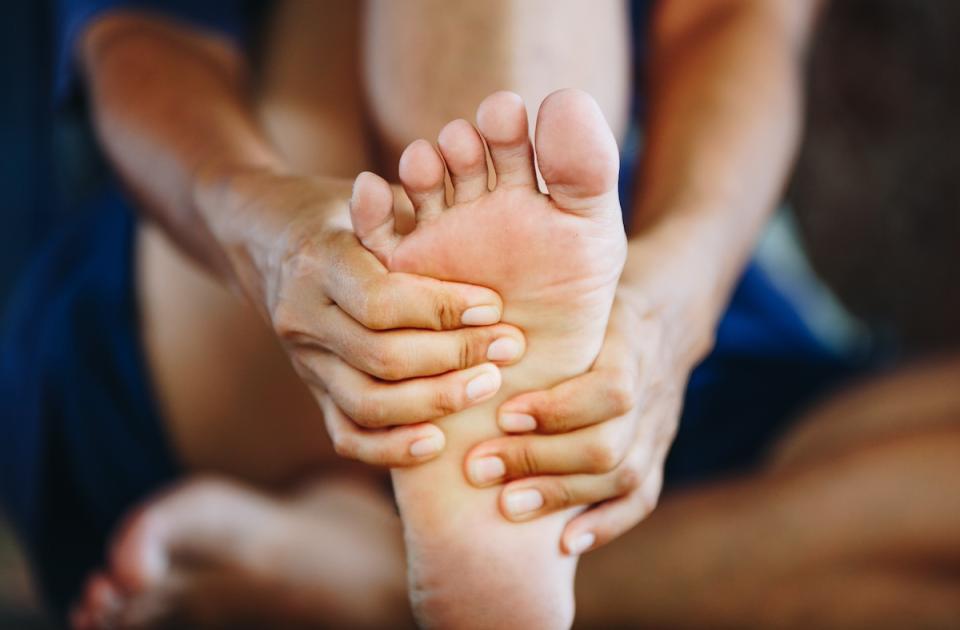We need our feet for nearly everything we do – from walking to dancing to sports. The 52 bones in your feet and ankles bear the brunt of your body weight. That’s a lot of pressure on the smallest weight-bearing joints in your body.
“Our feet are the interface of the body with the rest of the world,” explains John Nassar, MD, foot and ankle specialist and independent member of the HonorHealth Medical Staff. “Feet are like the tires on a car, they are what connects our body to the surface beneath us – everything from hiking on uneven terrain to running on asphalt to playing basketball on a wooden court.”
Tips to avoid injuries
With your feet serving as the foundation to your body, how can you stop injuries in their tracks? Dr. Nassar shares five prevention tips:
- Use proper footwear. Get shoes that are supportive and fit your foot properly, leaving enough room to get feedback from the ground. (If your footwear is too tight, your body can’t receive sensory inputs.) When should you replace your shoes? Just like with a car tire, when you notice the treads are wearing, it’s time to get a new pair.
- Focus on strength, flexibility and balance. Cross-training your body is a key way to prevent injuries. Strength, flexibility and balance exercises all complement each other. An added bonus – by varying your workout routine, you limit the risk of an overuse injury.
- Keep your feet strong. While proper footwear is important, it’s also helpful to do some limited barefoot activities (as long as you are not a diabetic or have neuropathy) – such as yoga or walking around your house. Why? It helps strengthen the intrinsic muscles creating stronger feet and better balance. By having strong feet and ankles, you can also ward off issues further up your body such as knee and hip injuries.
- Commit to a balanced diet and hydration. Eating healthy and having a diet with a varied range of foods gives you the fuel your body needs to work effectively. It also helps you maintain a healthy weight which avoids putting extra stress on your feet. Staying hydrated throughout the day, and before, during and after exercise helps your joints, including your feet, stay well-lubricated.
- Ramping up physical activities. It’s imperative to take your time to build up your body to a new activity, both in time and frequency. This helps your body adapt and reduces the risk of injury – not only to your feet but also to other areas.
“We’re all built a little bit differently, so it’s important to figure out what’s right for your body, and control the things you can,” shares Dr. Nassar. “For example, if you have loose joints, you may need to focus a little bit more on strength and balance instead of flexibility. Or if you have a high arch, you’ll want to ensure you are properly fitted for shoes to provide the right amount of support for your activities.”
Even with prevention, injuries happen. When should you seek care?
“If your foot looks crooked or you’re in so much pain that an over-the-counter anti-inflammatory medicine isn’t providing any relief, you should seek urgent or emergency care,” explains Dr. Nassar. “Otherwise, if you’re having trouble bearing weight or have swelling that doesn’t go away with a day or two of rest, you should make an appointment with a foot and ankle specialist. The same is true if you have a nagging injury that doesn’t get better after a few weeks of modifying your activity and doing self-treatments."
Related content
Treating foot and ankle injuries and conditions
HonorHealth’s foot and ankle specialists provide surgical and non-surgical treatment options for a variety of injuries and conditions.
Six exercises for healthy strong ankles
Did you know that by taking the time to strengthen your ankle proactively, you can maintain your level of activity and prevent injuries?
Tips to recover from a sprained ankle
Ankle sprains are common injuries that can happen to anyone at any age. Check out tips to help you heal quickly if you sprain your ankle.

